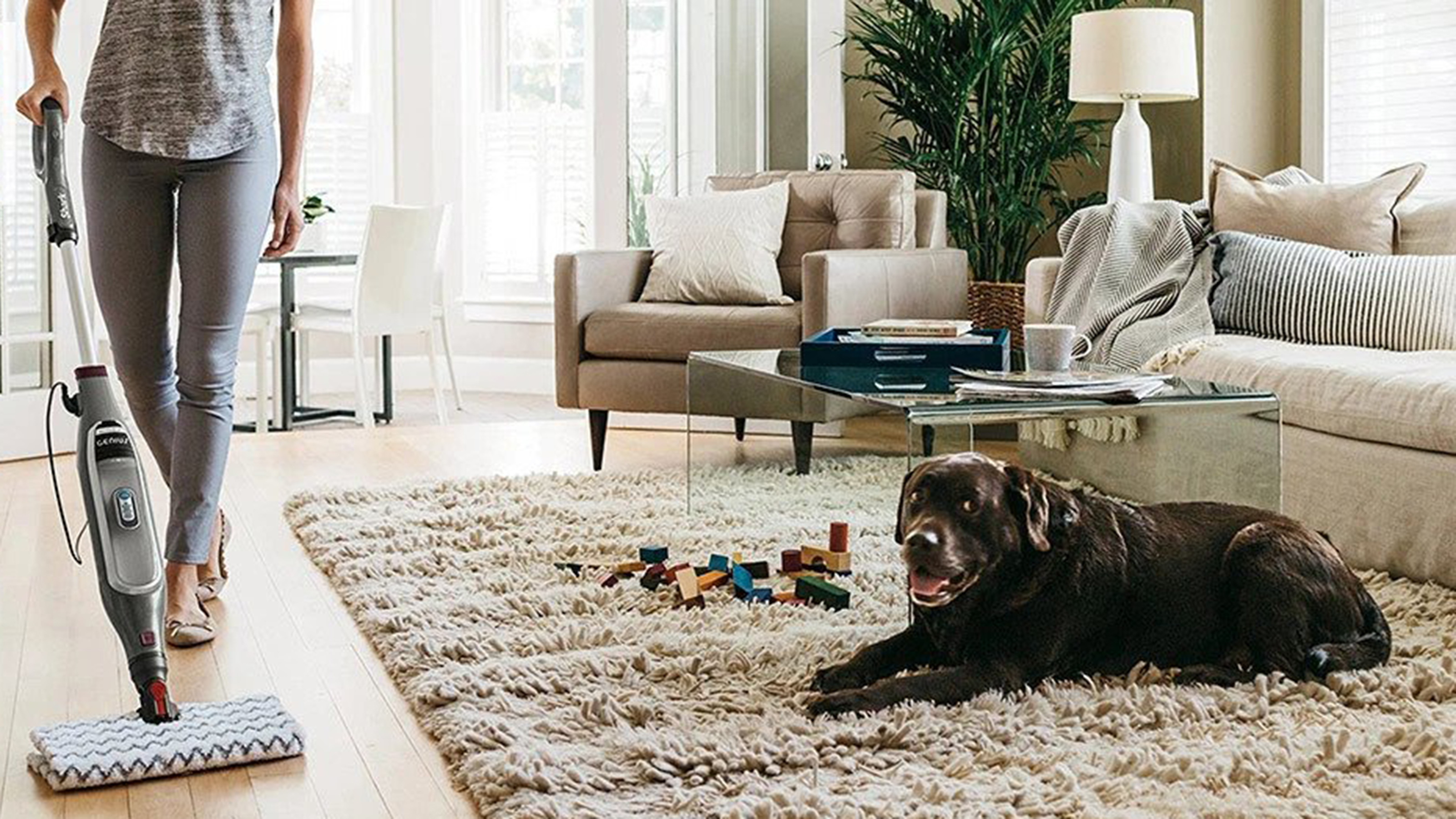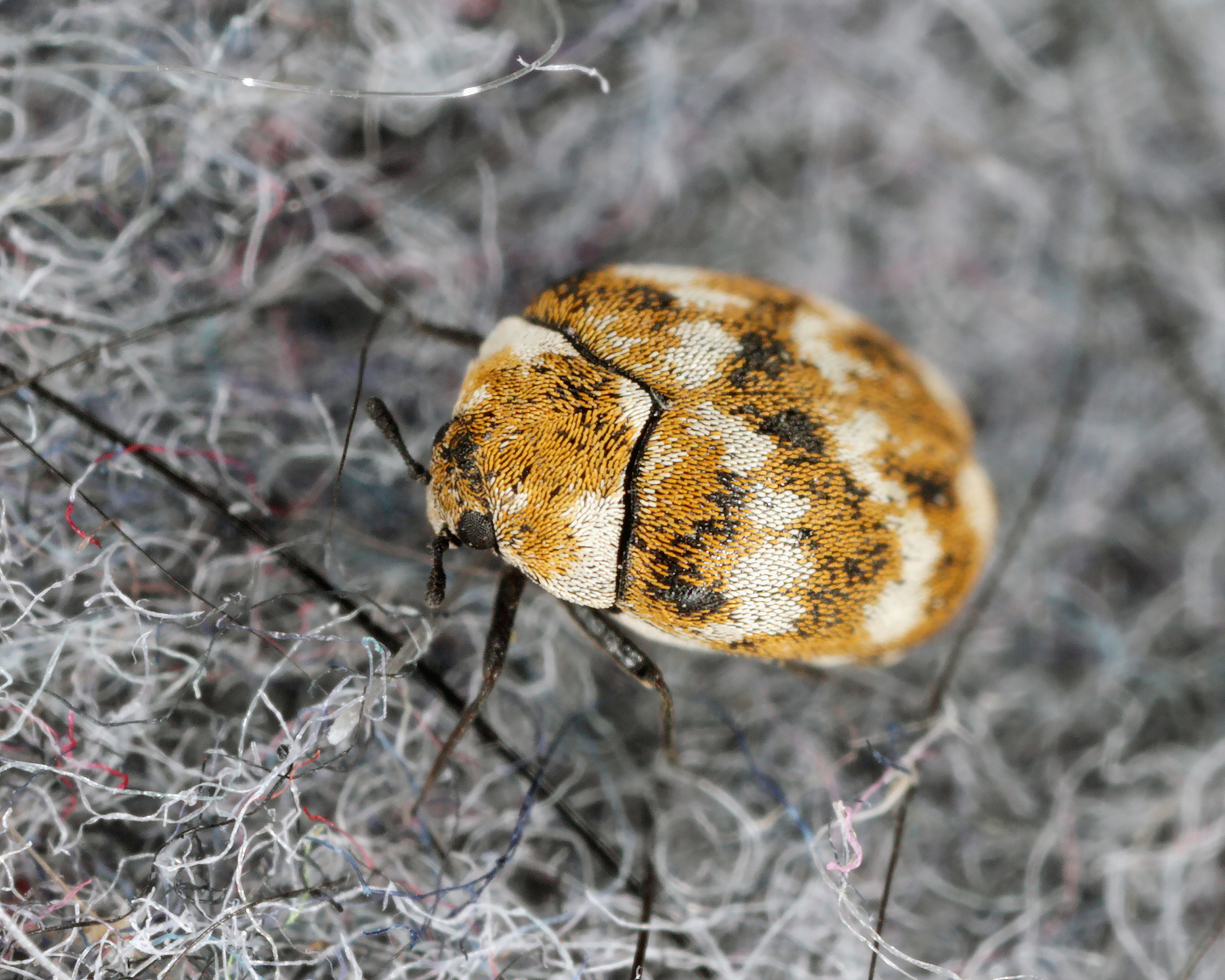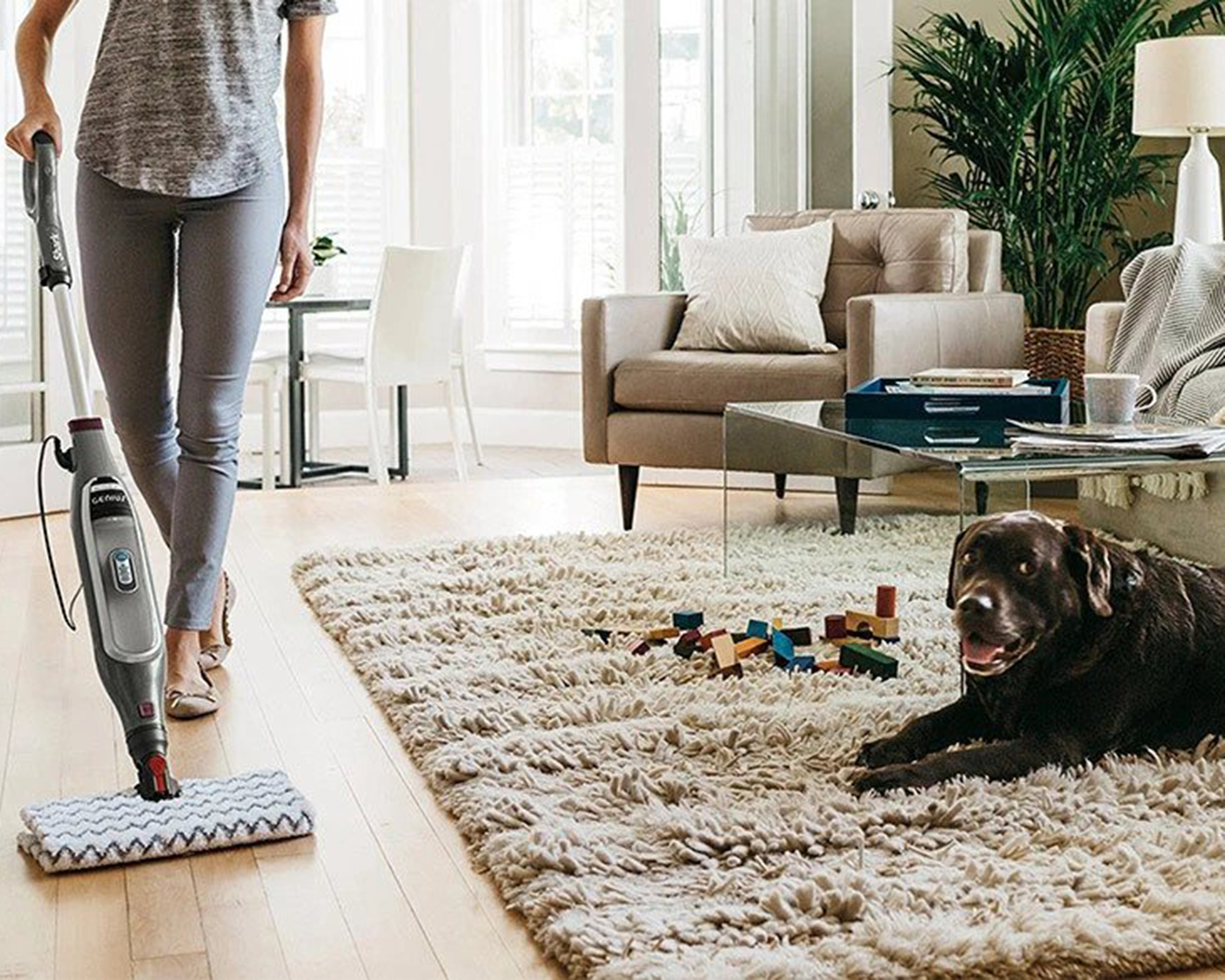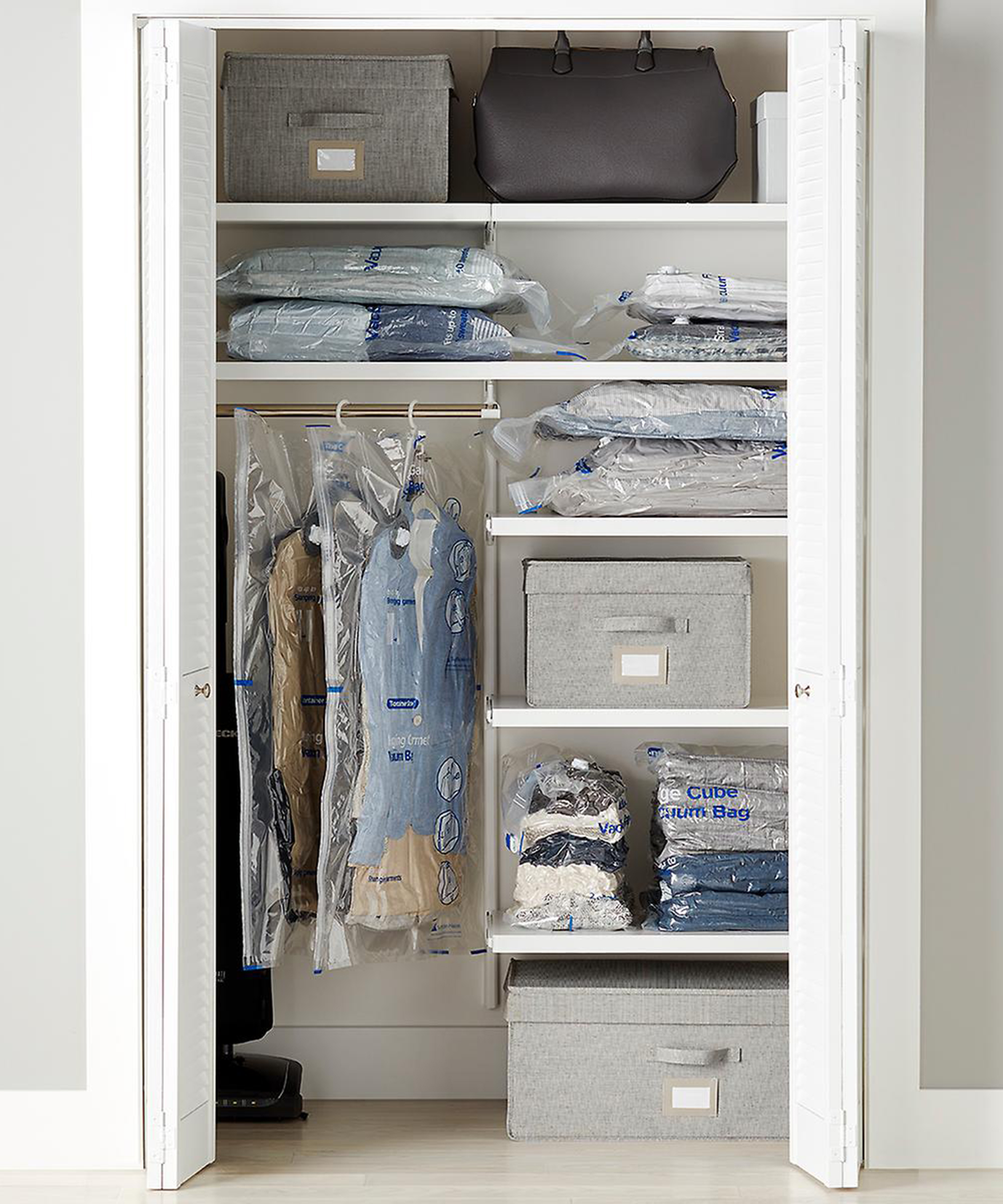How to get rid of carpet beetles: 13 natural ways to get rid of bugs and larvae
Find out how to get rid of carpet beetles naturally, and without calling out pest control

Want to know how to get rid of carpet beetles? You may not even have heard of them, but it's highly likely you have these critters in your home. Whether or not they're causing serious damage to your carpeted flooring, you'll want to take measures to eliminate them before they become a problem.
If you just want to know how to identify bugs in your home, we've got some handy imagery. But if you already know what you're dealing with and want effective solutions, that's where our carpet beetle-busting step-by-step comes in really handy.
Thankfully, it's not essential to call for professional help. In most cases, we'll show you how to get rid of carpet beetles naturally using cleaning appliances you'll already have, and household ingredients that already exist in your pantry. But if you'd like, there's also some more specialist finds that you can source if the critters don't get the hint.

How to get rid of carpet beetles
We have good news and bad news. The good news is that on the scale of household pests, carpet beetles are not all that bad. The bad news is that they're so common that you probably have them – even if you don't haven't chosen a particular type of carpet for your floors.
As Timothy Best, Terminix technical manager, explains, 'carpet beetle is just a common name, and often a misnomer, in my opinion. These insects belong to the family Dermestidae, which also includes other pests such as the larder beetle. Carpet beetles can appear in any home regardless of floor covering. Homes with hardwood, or say tile, are just as susceptible to this pest as homes with carpets. So, regardless of floor covering, carpet beetles are very common in many homes.'
With that in mind, just because they are common doesn't mean it's normal to have lots of carpet beetles in your home. If you suspect you have an infestation, you need to take steps, beyond cleaning the carpet, to get rid of them. Here's what to do.
1. Vacuum – and vacuum often
The best vacuum cleaner is your best friend here. Blake says that 'the best approach to managing these pests is to keep a tidy home. Regular and thorough vacuuming of floors (regardless of covering), carpets, rugs, and upholstered furniture will ensure that homeowners are removing potential food sources.'
Get small space home decor ideas, celeb inspiration, DIY tips and more, straight to your inbox!
Once you've done your floors, vacuum all the furniture and even your curtains. Jordan Foster, pest expert at Fantastic Pest Control, urges to 'vacuum every part of your upholstered furniture (sofas, armchairs, etc) that cannot be machine washed, making sure to use the appropriate attachments to reach the hard-to-reach areas.'
Make sure you know how to vacuum properly for best results. But, how often should you vacuum to get rid of carpet beetles? Jerry Miller of Miller Pest & Termite, recommends vacuuming 'daily for at least a week.' Sorry.
According to the British Pest Control Association: 'It is the larvae from eggs that do the damage. They feed on feathers, fur, hair, or wool and tend to wander along the pipes from roofs into airing cupboards - which house the clothes and blankets which constitute the food.'
So, if you do happen to own a cat or dog, investing in the best vacuum for pet hair might be something to consider.
2. Clean in dark, hard-to-reach areas
You may have cleaned everything – but did you get in that bit behind your best couch/under the bed/in that weird alcove behind the bookcase? To successfully eliminate carpet beetles, you'll need to arm yourself with the longest vacuum attachment you've got – or, buy the best handheld vacuum for the job, that's slim enough to slide in the snuggest contours of your home and suck 'em up.
Blake explains that carpet beetles 'have a tendency to congregate in dark undisturbed harborages, so cleaning hidden and often overlooked areas such as underneath furniture, and in areas like dark closets is important.'
Go find your crack and crevice cleaning attachment as well, as 'these types of debris can accumulate in the gaps, cracks and crevices tucked behind floor molding which can also serve as harborage for these pests.'
3. Try boric acid
Many people will solve their problem with steps one and two. However, if your carpet beetle infestation is more serious, you will need to take more drastic measures to get rid of them.
Foster recommends boric acid for its sheer lethal effectiveness (if you're against killing anything, this won't work for you): 'very few insects can survive contact with boric acid. You can sprinkle boric acid liberally on your carpet and vacuum it up after two or three hours to kill beetles, larvae, and eggs.'
You will need:
- Boric acid – this 1lb bag on Amazon can also be used as a kitchen cleaner
- Hot water – either from your faucet or best kettle
How to:
- Add 1 tbsp of boric acid to 2 cups of hot water to a spray bottle.
- Stir until the powder fully dissolves.
- Spritz your curtains, upholstery, skirting boards, and dark nooks where carpet beetle larvae choose to hang out.
The trouble with boric acid is it's strong stuff, so you'll want to keep pets and kids well out of reach of the treated area for several hours after application. You should also avoid using it on dark carpet.

4. Get the steam cleaner out
The best steam cleaner is an excellent solution for carpet beetles, especially if you have longer-pile rugs, are wondering how to clean a sheepskin rug, or anything else that's difficult to vacuum effectively. It also works a treat on upholstery, literally driving out the beetles and their larvae. Again, you will need multiple steam-cleaning sessions to make sure they're all gone.
If you're wondering how to get rid of carpet beetles naturally, this water-powered appliance will take the reigns on pest control. But if it's your first time using one, learn how to use a steam cleaner first to get the best bug-busting results.
5. Wash everything
If you've got large numbers of these insects, they likely will need more food than your carpet can provide. So, chances are they've already made their way into your furniture and your closet. So, Foster advises that 'all machine-washable fabrics should be soaked in hot, soapy water, including clothing, towels, bedding, cushion covers, and curtains. These items should be machine washed on the highest temperature setting with a good laundry detergent.'
You'll also need to learn how to wash silk and wool, the two natural fibers carpet beetles are fond of. These fabrics can be cleaned using your best washing machine, or hand-washed in the sink or a clean bucket.
If you're scared of shrinking your favorite shirts and blouses in the process, we've got a whole guide on how to use a washing machine. Yes, it might seem obvious, but choosing the wrong feature could be a costly mistake.
6. Throw away heavily-infested clothing
If you can see larvae in your jumpers, and if there already are holes – sadly, you'll just have to toss this item of clothing, and any others that have been munched on. It's better to sacrifice them than having even more items ruined. Miller is firm on this: 'keeping garments that have been infested makes it harder to stop an infestation.'

7. Kill carpet beetles with apple cider vinegar
Cleaning with vinegar has a myriad of amazing benefits, and it turns out it's also a great natural way to get rid of everything from flies to carpet beetles.
A good way to treat large areas of carpet is to first give it a vacuum and then dab a diluted apple cider vinegar which you can pick up at Amazon and apply to problem areas. This will not only kill them but also repel them from coming back as they loathe the acidity of ACP.
You can also make a very simple vinegar spray to use on harder-to-reach places, like closets and under furniture. On the flip side, there are some things you should never clean with vinegar (including the best living room rugs made from wool), so take note of our guide as a precaution.
You will need:
- Apple cider vinegar - available on Amazon
- An empty spray bottle - get a reusable container from Amazon
- Access to water (from the faucet will do)
How to:
Simply pour the vinegar into an empty spray bottle, mix with a little water and mist the vinegar onto the larvae.
8. Use diatomaceous earth
Working as a natural desiccant, diatomaceous earth (just pick up at Amazon) comes in powder form and works by drying out the insects. Like boric acid above, sprinkle over the areas where you've seen infestations and vacuum up after a few hours. You can also place this in the back of cupboards and other hard-to-reach areas.
Warning: Make sure you buy food-grade diatomaceous earth which makes it safe for humans and pets. Always make sure you wear a dust mask (get a pack on Amazon) to make sure you don't inhale the small particles.
9. Catch carpet beetles in pheromone traps
Pheromone or hormone traps like ProPest's traps on Amazon are a great option if you're starting to feel outnumbered by these little creeps. They work by luring the beetle with a specific pheromone (make sure you buy carpet beetle pheromone traps) and trap them with sticky glue.
They work best if placed around entry points, and in confined areas where you've seen the beetles hanging around. Make sure you check the traps once or twice a week.
10. Go in with an insecticide
Although insecticide should only be used as a last resort, it can be effective. You can combat any active larvae by spraying your carpets, upholstery, and rugs with a ready-made insecticide, like Wondercide's indoor pest control spray on Amazon which is marketed as an eco-friendly cleaning product with four attractive and aromatherapeutic scents.
It also uses an essential oil recipe in its formulation to deter and keep bugs at bay. If you've got arachnophobia, and wondering how to get rid of spiders naturally, kill two birds with one stone with this particular product.
Insecticides should really only be used for spot treatments and not sprayed everywhere so we would recommend this if you've first identified the carpet beetle problem areas. Spray around the edges of carpets and rugs, closet shelving ideas, and any hard-to-reach nooks and crannies.
Warning: Read the safety precautions carefully before using. Always use gloves (select your size on Amazon) and protective clothing when using these products. As always, keep small humans and pets away.
11. Get rid of them once and for all with an insect fogger
If you're still finding the odd adult carpet beetle straggler in your home, even after you've fought the good fight and won, a good go-to is the insect fogger which we found on Amazon.
It works pretty much as described; the fogger will set off a pesticidal smoke to kill any bugs pottering about your home.
Warning: Make sure you, your children and your pets are well clear of the area while the product does its thing and wait at least three hours before going back into the newly-treated room. We'd also advise turning off all your smoke alarms too.

12. Store your clothes and sheets in containers
Taking their favorite foods away from carpet beetles will avoid their re-entry and that includes out-of-season clothes and sheets. Invest in quality vacuum pack bags or plastic containers as closet organization ideas to store clothes that won't be used for a while.
When you want to take them out of storage to wear again, wash, dry clean or air them well before wearing them. You can also use garment bags in your wardrobes for things you are still wearing and try cedar rings which can be picked up at Amazon or balls to deter them further.

13. Repair any entry points
Limiting the carpet beetles' entry into your home is arguably one of the best ways to repel them for good. Check for any cracks, crevices, or holes and fill them in with caulk (like this Gorilla White 100% Silicone Sealant Caulk on Amazon) or wire wool.
If you have your windows open a lot, it's worth looking into bug screens like this adjustable DIY magnetic version from NeatiEase on Amazon. If you already have them installed, check them regularly for damage and patch up accordingly. For example, this screen repair tape from Amazon means that you don't have to go out and buy another screen door should yours get damaged.
Can you get rid of carpet beetles yourself?
The answer is: yes, but you'll have to have perseverance and clean all the time. Blake admits that managing and controlling carpet beetles is 'difficult because of their ability to locate food and shelter in the most obscure places of a home.
If carpet beetles are routinely present in a home in large numbers, then that likely means there is a food source available. Despite their common name, carpet beetles feed on a variety of “foods” such as lint, pet hair, dead insects, and accumulations of dust to name a few.'
Given this very varied diet, you may find that you won't quite manage to get rid of them all. However, with a rigorous and consistent cleaning routine, you can drastically reduce their numbers in your home without needing to call in professional pest control.

Should I be worried about carpet beetles?
Let's put it this way: if you've found a couple and they're adults, you shouldn't be too worried. You also don't need to worry about carpet beetles biting you – neither adults nor larvae bite humans. Some people can be allergic to the hairs on the bodies of the larvae and will react with an itchy rash if they come in contact with the young insects. You don't need to worry about carpet beetles giving you a disease, though – they don't carry anything harmful to humans.
Now, when it comes to damage to your stuff, it's a different matter. Blake warns home dwellers that 'depending on the contents of the home and how many insects were found,' there may be a cause for concern.
As a rule of thumb, 'if a homeowner finds a few to several adult carpet beetles, they could have just flown in from the outside, especially in the spring and summer and in warmer climates. These insects do occur in nature and can often be found on flowers and can enter a structure through an open door or window.'
However, if you keep finding their larvae in your carpet or upholstery, this is a bit worrying, because this 'may be an indicator of an established population indoors.' Carpet beetles larvae 'can feed on a variety of textiles in the home and cause damage. Woolens, silk, and anything else with animal fiber can be damaged such as rugs, blankets, clothes, even taxidermy.'
If you've found larvae – up your cleaning game now, to prevent having to say goodbye to your favorite rug, jumper, or your best leather sofa a few months down the line.
And, if you still can't get rid of these keratin-loving creatures, it may be time to call the experts. Pest control companies can save you from this skin-crawling job of search and destroy, as carpet beetles hatch quite quickly with the beetles' gestation period lasting only a fortnight.
Kevin Eyre, marketing manager at Orkin Canada says: 'In spring, female carpet beetles lay 25 to 100 eggs, which hatch into larvae within two weeks. Carpet beetle larvae are able to mature under a variety of humidity levels and temperatures, although they tend to avoid bright areas.'
As warmer weather approaches, watch out for other pests trekking inside your home. Our expert guide on how to get rid of ants from a kitchen might come in handy when tackling pests.

Jenny is Senior Digital Editor and joined the team in January 2021. She also works on the homes brands' video show, on the Future Homes Network, which is packed full of ideas to help you make the most of your own home and garden. Since getting on the property market with her first apartment and then more recently a house, her passion for interior design and gardening has taken on a new lease of life. Jenny's currently on the lookout for a doer-upper to put her stamp on. She loves collecting and salvaging unique items (much to her other half's despair) but sniffing out stylish home bargains is her one true love. When she has a spare minute, she loves to do a spot of crafting, having studied textiles at Uni – although she hardly gets the chance with a toddler who keeps her permanently on her toes.

